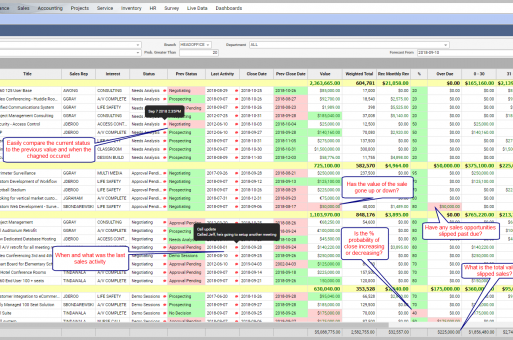In a lot of organizations, your sales forecast is only giving you a partial representation of the truth
The first challenge is to establish objective criteria against the data
Sales people are generally very optimistic and hopeful, and as great a trait as that is, it doesn’t always make for great judgement when evaluating where a sales opportunity is within the sales cycle. One very simple, yet powerful method to get objectivity into the numbers is to define what your various sales cycles look like. You enter into a market with competitors that have access to essentially the same gear and expertise as you. However, you show up in the market differently than they do. That is called your Value Proposition. How are you different than they are? I’m sure everyone can answer that question within your sales department.
Those qualifying and closing criteria become your sales funnel definition. You can define a unique value proposition (sales funnel definition) for every solution that you sell into each unique market place. Now, if each sales person uses that criterion to vet out prospects, you should end up with a much more objective, realistic sales forecast.
The second challenge is to use your sales forecast as a tool to analyze the movement of sales opportunities
When you look at your current forecast and review a closing date, how do you know how often that date has moved? And what about the status of the opportunity? Is it moving in a positive or negative direction?
Having your sales people use your core ERP system as their day-to-day tool to manage contacts and sales opportunities is the first step in getting valuable information from the sales forecast. This practice removes the burden and the subjectivity of a sales person having to update or create a sales forecast prior to sales meetings. When the sales funnel definition guides their daily activity and their notes are part of normal record keeping, the sales forecast adjusts based on this activity.
Now, with a proven sales process in place, in addition to an on-demand, real-time sales forecast tool that is driven by the activities of your sales team, you have all the pieces for a dynamic sales forecast live data report.
- Group by any value; in the example below all sales opportunities are grouped by their status
- Quickly see the last statusand the date it changed
- Click on the comment button to see the last sales persons note and the date it was made
- Quickly see the close date and if it is changed, is the sale closing early or is it slipping
- Easily see the percentage probability of close and if it is increasing or decreasing
- Quickly see if a sales person has let a deal slip by; has the close date passed and gone without an update and what is the total amount of business that has slipped
- And obviously a quick summary of what is closing in the next 30, 60, 90 or greater than 90 days, all with drill down to the source sales opportunity
Another beneficial outcome from a single unified system is that you can now use this repository of objective sales forecasting and apply it against your cash-flow and revenue forecasting with a high degree of reliability. We’ll talk more about that soon.


